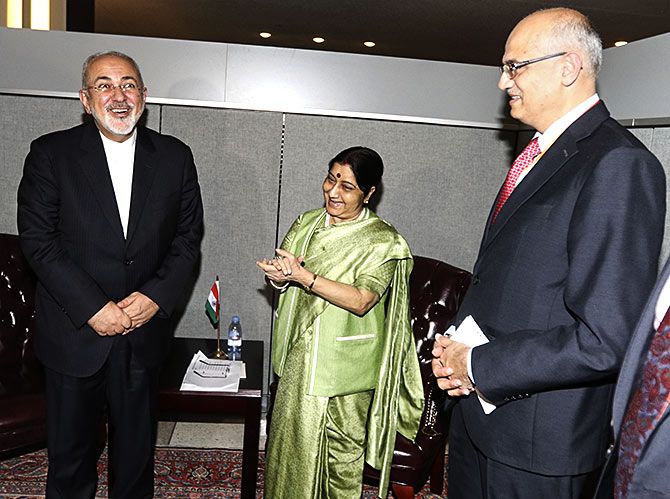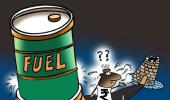'All but one of the previous oil shocks brought either a change of government or a political crisis.'
'Is the government braced for stormy weather?' asks T N Ninan.

Brent crude was ruling near $120 per barrel when Narendra Modi became prime minister in mid-2014. It fell to a low point of $29 in January 2016, before climbing back up.
A year ago, the price had crossed $50, and by December was over $60. In May, it crossed $70, and is now past $80.
There is no shortage of forecasters who expect it to cross $100 once the Iran sanctions kick in.
Some see a peak price of $120 in 2019. If that happens, we will be back where we were.
With the rupee having fallen against the dollar in the interim, and taxes increased, petrol and even diesel prices could be headed for the three-figure mark.
There is no oil price shock that has not derailed the Indian economy, usually in conjunction with other factors.
It happened in 1973-1974, when the international crude oil price doubled in a year of poor harvests to the current equivalent of $46 (all historical prices are in 2017 dollars, for easy comparison). India's inflation rate rose sharply as growth tumbled.
The second oil shock, of 1979-1980, saw oil at $111, which, along with another bad harvest, caused gross domestic product to shrink, and that by as much as 5 per cent.
The third episode was no more than a brief price spike at the time of the first Iraq war; the average price for 1990 was only $43, but that was enough to tip the country into the foreign exchange crisis of 1990-1991.
The oil shock of 2008 (average price of $104, though the peak was much higher) came with the financial crisis of the same year, their combined effect causing a sharp dip in GDP growth.
Oil prices stayed high through 2011-2014, at over $90, causing the country's current account gap to leap to 4.8 per cent of GDP in 2012-2013, growth to plunge to the lowest levels in a decade, and the rupee to plummet.
If the forecasters are right and oil is headed for not just $100 but perhaps even $120, we are headed for a sixth price shock -- and possibly a sixth economic shake-up.
The trade gap, inflation, the rupee's external value and economic growth could all come under pressure.
The current account deficit, already projected in danger zone at close to 3 per cent of GDP, could get further bloated -- and make rupee bets more bearish.
If the government feels obliged to tackle consumer pressure by lowering taxes on petroleum products, revenue loss will push fiscal numbers out of line.
If the inflation rate climbs, and the Reserve Bank sticks to its inflation target, higher interest rates will constrict both investment and consumption, causing slower growth.
Balancing conflicting considerations will test the decision-making team.
All but one of the previous oil shocks also brought either a change of government or a political crisis.
The 1973-1974 oil shock set off a chain of events, from rampant inflation to a mass agitation led by Jayaprakash Narayan, which led eventually to the imposition of Emergency rule in 1975.
The only time when an oil shock did not bring about political change was in 2009 when the Manmohan Singh government got re-elected.
Is the government braced for stormy weather?
It is hard to do much in the short term, which is why the steps announced so far are underwhelming. Some may also be superfluous, like the higher tariffs announced in stages from early this year.
When the rupee has fallen against the dollar by 13 per cent since January, domestic producers are already getting a significantly higher level of protection from imports.
Piling higher tariffs on top of that does more harm than good and sends an already crisis-ridden aviation sector into even more turbulence.
The most important policy choice is whether to continue buying oil from Iran, since it is the Iran sanctions that are expected to send oil prices higher.
Keeping Iranian oil exports going will moderate price spikes, and therefore the size of the oil shock, but that could invite US sanctions.
Is the country willing to run that gauntlet?











